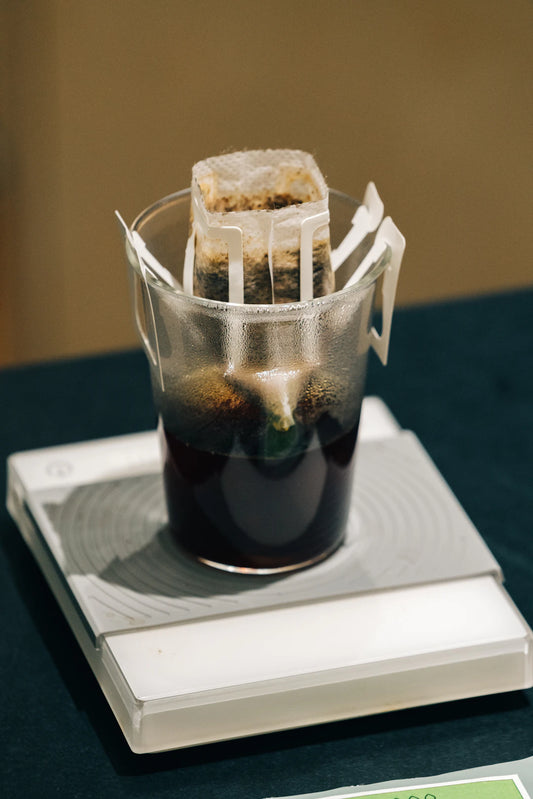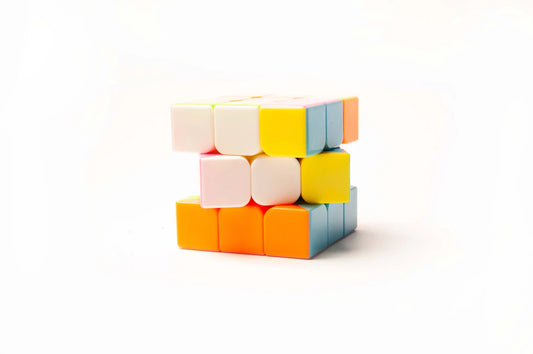
Unraveling the Sweetness: Sugar Cubes in Cocktails
Share
Overview
Sugar cubes are essential for crafting cocktails, impacting flavor, texture, and sweetness. They help balance acidity and bitterness in drinks like the Old Fashioned and Mint Julep. Understanding their role and experimenting with different types and methods can elevate your cocktail-making skills.
Frequently Asked Questions
1. What role do sugar cubes play in cocktails?
2. What is the history of sugar cubes in cocktail making?
3. Can sugar cubes be used in non-alcoholic drinks?
4. How can I experiment with sugar cubes in cocktails?
5. What tips can help me incorporate sugar cubes effectively in cocktails?
Cocktails are an art form, a blend of flavors and aromas that create a delightful sensory experience. One of the most intriguing elements that contribute to the complexity of cocktail flavor profiles is the sugar cube. While often overlooked, sugar cubes play a crucial role in defining the taste of your favorite mixes. In this article, we’ll explore how sugar cubes affect cocktail flavor profiles, their use in various drinks, and tips on mastering their incorporation in your cocktail crafting. Get ready to mix it up!
The History of Sugar Cubes in Cocktails
To fully understand the impact of sugar cubes on cocktail flavor profiles, it's essential to know their origins and evolution. Sugar cubes appeared in the early 19th century, springing from the need for convenience. Before their invention, bartenders relied on loose sugar that often resulted in gritty textures or uneven sweetness in cocktails. This innovation allowed for controlled sweetness and ease of use, paving the way for various classic drinks.
Today, sugar cubes remain a staple in cocktail culture, from the classic Old Fashioned to the refreshing Mint Julep. Their shape and consistency allow bartenders to balance the sweetness perfectly without overpowering other flavors.
Understanding Flavor Profiles
Flavor profiles refer to the combination of tastes, aromas, and sensations that create a unique experience with each drink. Often composed of four basic tastes—sweet, sour, salty, and bitter—cocktails rely on these elements to achieve harmony. Here's how sugar cubes fit into this mix:
The Sweet Element
The primary function of sugar cubes in cocktails is to introduce sweetness. This is particularly important for balancing the acidity of compounds like citrus juices or the bitterness found in spirits such as whiskey or gin. An optimal level of sweetness can elevate a cocktail, making it more approachable and enjoyable for a broader range of palates.
Enhancing Other Flavors
In addition to sweetening a cocktail, sugar cubes also enhance other flavors. When sugar dissolves in a drink, it interacts with aromatic compounds and flavors, making them more prominent. For instance, in a well-crafted Mojito, the sugar amplifies the mint and lime notes, creating a bright, refreshing experience.
Mouthfeel and Texture
The texture of a drink is another aspect influenced by sugar cubes. The slow dissolution in liquid creates a smooth, silky mouthfeel, contributing to that luxurious feel in cocktails. By controlling the amount and timing of the sugar's dissolution, bartenders can manipulate the drink's texture to create unique experiences. For example, a slow-melting sugar cube in a stirred cocktail provides a delightful contrast to the chilled spirit, enhancing the overall experience.
Classic Cocktails Using Sugar Cubes
Understanding how sugar cubes function in cocktails starts with examining classic recipes. Below are a few timeless drinks where sugar cubes are critical to the flavor profile:
The Old Fashioned
Arguably the most iconic cocktail, the Old Fashioned relies on a juxtaposition of sweetness and bitterness. The sugar cube serves as a balancing agent against the robust whiskey, while also integrating aromatic bitters and a twist of citrus. To prepare this timeless drink, you muddle a sugar cube with bitters and a splash of water, allowing the sugar to dissolve before adding ice and whiskey. This method creates a beautiful synergy of flavors.
Mint Julep
The Mint Julep is another cocktail classic that showcases the sugar cube's versatility. Traditionally served in a silver cup, the sugar's sweetness enhances the vibrant mint and cools the palate. To craft a perfect Mint Julep, muddle a sugar cube with fresh mint leaves and a splash of water, then add crushed ice and bourbon. The resulting cocktail is refreshing and balanced, perfect for sipping on a hot day.
Sazerac
The Sazerac takes things a notch higher by combining sugar with a rich bourbon or rye. The sugar cube is muddled with Peychaud's bitters, then combined with an absinthe rinse for an aromatic and flavorful drink. Here, the sugar balances the herbal notes of absinthe while also amplifying the whiskey's characteristics. Each sip unveils a complex flavor journey, guided by the sugar's sweetness.
Modern Twists and Creative Uses
While classics are essential, the allure of cocktails lies in experimentation. Here are some modern applications of sugar cubes that can expand your cocktail crafting horizons:
Infused Sugar Cubes
Infusing sugar cubes with flavors such as vanilla, herbs, or spices can elevate your cocktails to new heights. Infused sugar can enhance the profile of a drink while providing an unexpected twist. Simply steep sugar cubes in flavored syrup or alcohol, then use them in cocktails for a unique touch.
Using Sugar Cubes in Non-Alcoholic Cocktails
With the growing trend of mocktails, sugar cubes are also perfect for creating flavorful non-alcoholic drinks. The same principles apply: balance sweetness with acidity and enhance flavors. Try incorporating sugar cubes into shrub-based mocktails, herbal teas, or refreshing lemonades for a delightful sipping experience.
Adjusting Sweetness Levels
A significant advantage of using sugar cubes is the ability to control sweetness. Depending on personal preference and the type of spirit used, you can easily adjust how much sweetness you introduce into your cocktail. Feel free to experiment with different sugar cube sizes—small cubes dissolve faster, while larger ones provide slow-building sweetness, allowing for tailored experiences with each drink.
Perfecting the Art of Sugar Cubes in Cocktails
Now that you know the vital role sugar cubes play in cocktail flavor profiles, let's go through some tips for incorporating them effectively into your drink creations:
Choose the Right Sugar Cube
Not all sugar cubes are created equal. Different types of sugar, including white, brown, or flavored sugar cubes, carry distinct flavor profiles. Choose wisely based on the overall flavor composition of your cocktail. For rich drinks, brown sugar cubes can lend a deeper, molasses-like flavor, while standard white sugar cubes provide a more straightforward sweetness.
Know When to Muddle
The method of incorporating sugar cubes into your cocktail matters. Muddling a sugar cube with bitters before adding liquids allows flavors to meld and results in smoother sweetness. Always consider the timing and method of sugar integration to achieve the best flavor balance in your cocktails.
Experiment and Taste
Above all, embrace creativity when it comes to cocktails. Adjust the amount of sugar you add depending on your palate and the other ingredients. Don’t be afraid to taste and modify your recipes as you go along; this is where the magic happens!
Sweet Takeaways for Cocktail Enthusiasts
Understanding how sugar cubes affect cocktail flavor profiles opens up a world of possibilities for both amateur and seasoned mixologists. From the classic masterpieces to modern innovations, sugar cubes are essential for achieving balance and enhancing flavors in cocktails. By using them wisely, you can create unforgettable drinks that delight your guests and elevate your cocktail game. So go ahead, experiment with sugar cubes and harness their full potential for dynamic and flavorful libations. Cheers to your next cocktail creation!



